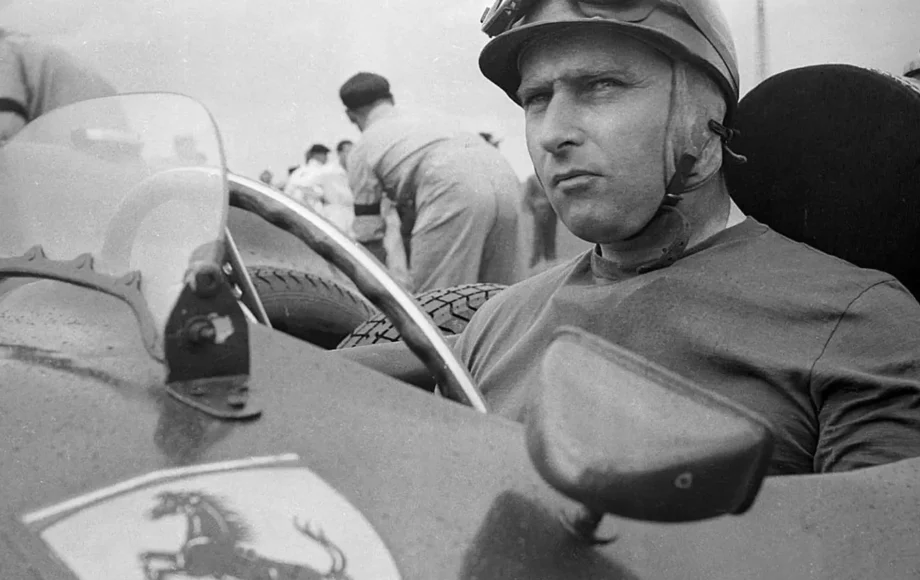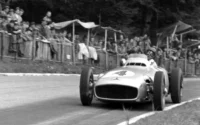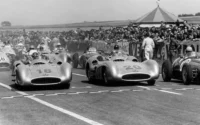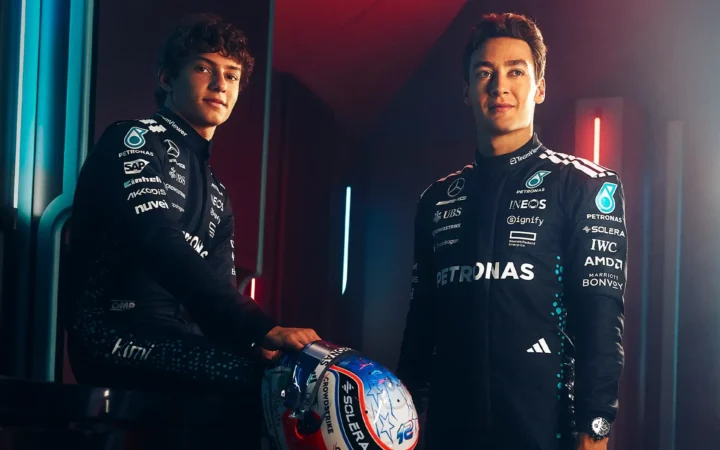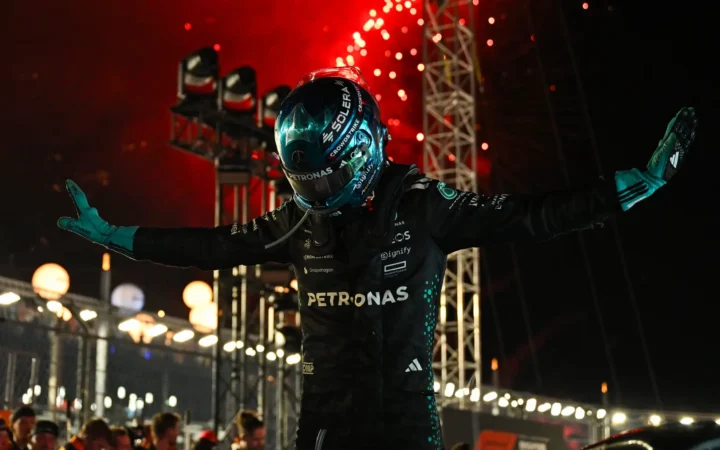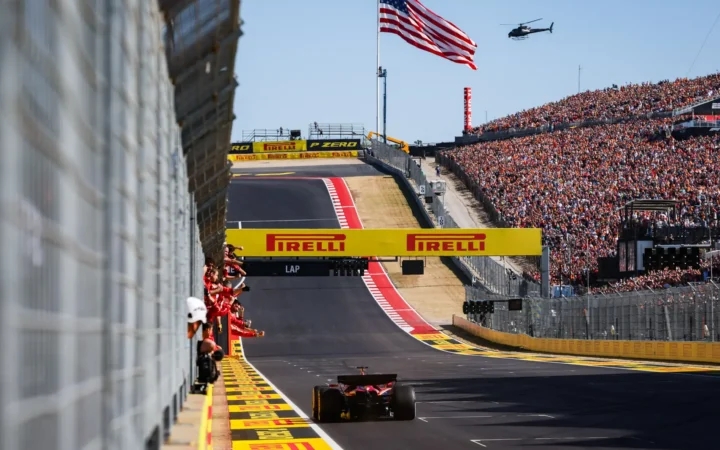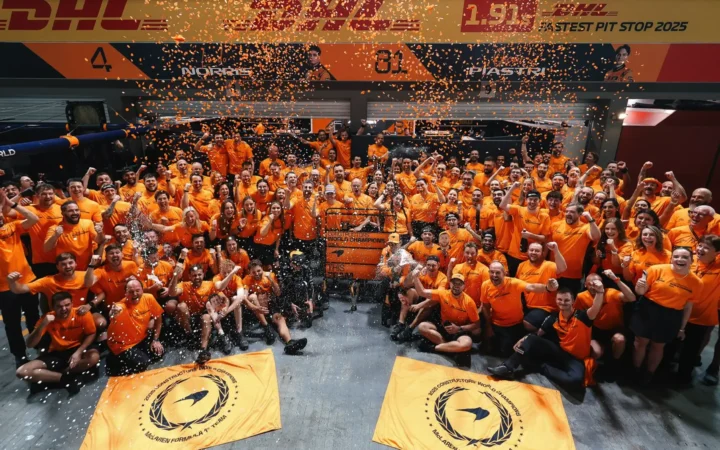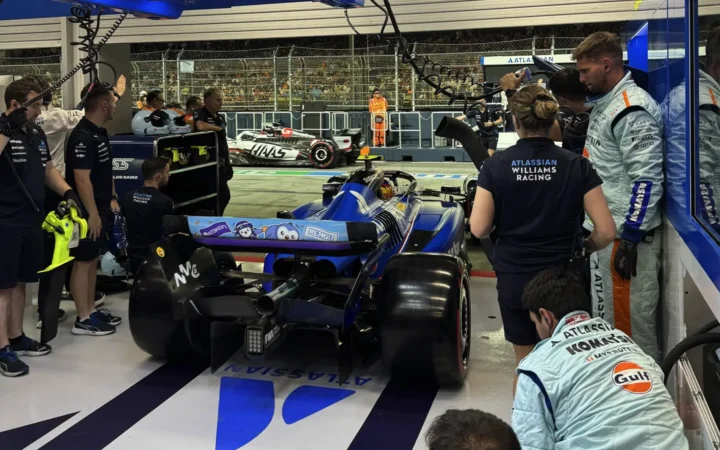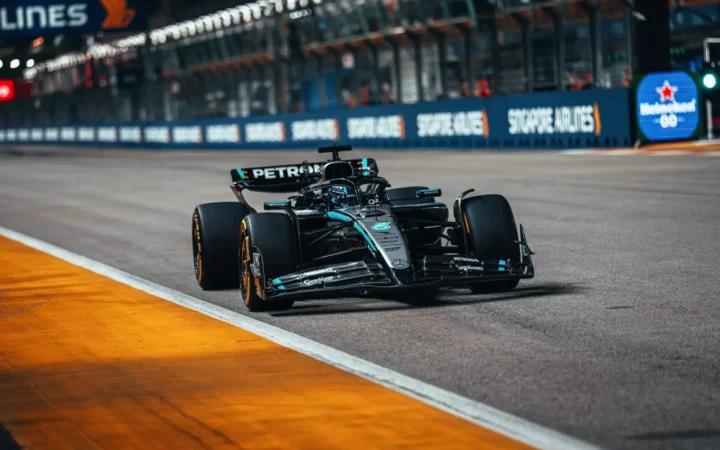What happened on this day, July 17 in Formula 1 history? Find out interesting facts and stories about Formula 1 on this day.
1901
Luigi Chinetti, born near Milan on this day, fled Italy to escape the rise of fascism. Initially working as a mechanic for Alfa Romeo, he began racing for the team and won his first Le Mans 24-Hour race in 1932, repeating the victory in 1934. During World War II, he moved to the USA but returned to Europe to claim his third Le Mans 24-Hour win in 1949, this time driving a Ferrari. He also achieved success in other sports car events.
In 1954, Chinetti opened the first Ferrari dealership in the USA and founded the North American Racing Team (NART), an official Ferrari team. NART played a crucial role in establishing Ferrari’s prominence in American racing circuits. Moreover, Chinetti’s sales to wealthy individuals in North America were instrumental in Ferrari’s survival as a car retailer. Luigi Chinetti passed away in 1994.
1954
At a wet 1954 British Grand Prix, local talent supplemented the big guns as usual, but it was the Italian teams who dominated, securing five of the first six places. The Maserati team arrived late and started from the back of the grid, yet their drivers worked their way through the field, with Onofre Marimon overtaking 19 cars on the first lap alone.
Juan Manuel Fangio took an early lead but faced transmission problems with Mercedes, allowing Jose Froilan Gonzalez, Stirling Moss, and Mike Hawthorn to overtake him. Gonzalez managed to hold on for the win, while Moss suffered a rear axle failure, resulting in Hawthorn finishing second, Marimon third, and Fangio fourth. The result gave the Ferrari team a 1-2 finish.
Formula One History Recommends
1954 British Grand Prix Race Results
| Pos | No | Driver | Car | Laps | Time/retired | Pts |
|---|---|---|---|---|---|---|
| 1 | 9 | Jose Froilan Gonzalez | Ferrari | 90 | 2:56:14.000 | 8.1 |
| 2 | 11 | Mike Hawthorn | Ferrari | 90 | +70.000s | 6.1 |
| 3 | 33 | Onofre Marimon | Maserati | 89 | +1 lap | 4.1 |
| 4 | 1 | Juan Manuel Fangio | Mercedes-Benz | 89 | +1 lap | 3.1 |
| 5 | 10 | Maurice Trintignant | Ferrari | 87 | +3 laps | 2 |
| 6 | 4 | Roberto Mieres | Maserati | 87 | +3 laps | 0 |
| 7 | 2 | Karl Kling | Mercedes-Benz | 87 | +3 laps | 0 |
| 8 | 8 | Ken Wharton | Maserati | 86 | +4 laps | 0 |
| 9 | 19 | Andre Pilette | Gordini | 86 | +4 laps | 0 |
| 10 | 29 | Bob Gerard | Cooper Bristol | 85 | +5 laps | 0 |
| 11 | 25 | Don Beauman | Connaught Lea Francis | 84 | +6 laps | 0 |
| 12 | 3 | Harry Schell | Maserati | 83 | +7 laps | 0 |
| 13 | 23 | Leslie Marr | Connaught Lea Francis | 82 | +8 laps | 0 |
| NC | 7 | Stirling Moss | Maserati | 80 | DNF | 0.1 |
| 14 | 26 | Leslie Thorne | Connaught Lea Francis | 78 | +12 laps | 0 |
| NC | 22 | Bill Whitehouse | Connaught Lea Francis | 63 | DNF | 0 |
| NC | 17 | Jean Behra | Gordini | 54 | DNF | 0.1 |
| NC | 5 | Roy Salvadori | Maserati | 53 | DNF | 0 |
| NC | 6 | Prince Bira | Maserati | SHC | 0 | |
| NC | 6 | Ron Flockhart | Maserati | 44 | DNF | 0 |
| 15 | 28 | Horace Gould | Cooper Bristol | 44 | +46 laps | 0 |
| NC | 32 | Luigi Villoresi | Maserati | SHC | 0 | |
| NC | 32 | Alberto Ascari | Maserati | 40 | DNF | 0.1 |
| NC | 24 | John Riseley-Prichard | Connaught Lea Francis | 40 | DNF | 0 |
| NC | 12 | Reg Parnell | Ferrari | 25 | DNF | 0 |
| NC | 31 | Alberto Ascari | Maserati | 21 | DNF | 0.1 |
| NC | 18 | Clemar Bucci | Gordini | 18 | DNF | 0 |
| NC | 20 | Peter Collins | Vanwall | 16 | DNF | 0 |
| NC | 14 | Robert Manzon | Ferrari | 16 | DNF | 0 |
| NC | 21 | Peter Whitehead | Cooper Alta | 4 | DNF | 0 |
| NC | 15 | Louis Rosier | Ferrari | 2 | DNF | 0 |
| NC | 30 | Eric Brandon | Cooper Bristol | 2 | DNF | 0 |
1971
The 1971 British Grand Prix was overshadowed by the death of BRM driver Pedro Rodriguez the previous weekend in an Interserie sports car race at Norisring in Nuremberg, West Germany, on 11 July 1971. He was driving a Ferrari 512 M for Herbert Müller Racing, his friend and teammate from the Targa Florio earlier that year. According to a report, trackside photographers observed his right front tyre coming off the rim under heavy braking for the sharp s-bend as early as the 10th lap. On lap 12, the tyre completely detached, causing the car to crash into a wall, rebound across the track, and catch fire. Rodríguez died shortly after being removed from the wreck.
At the British Grand Prix, Jackie Stewart, who was virtually assured of the championship, took the lead on the fourth lap and finished more than half a minute ahead of Ronnie Peterson in second, who impressively completed the race without his rear roll-bar. “The Ferraris were ahead of me at the start, but they kept making mistakes,” Stewart said. Tim Schenken was on track for a podium finish until he suffered a transmission failure near the end. Graham Hill‘s race ended within feet of the start when Jack Oliver’s McLaren rear-ended him. Lotus driver Emerson Fittipaldi came in third.
1971 British Grand Prix Race Results
| Pos | No | Driver | Car | Laps | Time/retired | Pts |
|---|---|---|---|---|---|---|
| 1 | 12 | Jackie Stewart | Tyrrell Ford | 68 | 1:31:31.500 | 9 |
| 2 | 18 | Ronnie Peterson | March Ford | 68 | +36.100s | 6 |
| 3 | 1 | Emerson Fittipaldi | Lotus Ford | 68 | +50.500s | 4 |
| 4 | 26 | Henri Pescarolo | March Ford | 67 | +1 lap | 3 |
| 5 | 24 | Rolf Stommelen | Surtees Ford | 67 | +1 lap | 2 |
| 6 | 23 | John Surtees | Surtees Ford | 67 | +1 lap | 1 |
| 7 | 22 | Jean-Pierre Beltoise | Matra | 66 | +2 laps | 0 |
| 8 | 17 | Howden Ganley | BRM | 66 | +2 laps | 0 |
| 9 | 16 | Jo Siffert | BRM | 66 | +2 laps | 0 |
| 10 | 14 | Francois Cevert | Tyrrell Ford | 65 | +3 laps | 0 |
| 11 | 20 | Nanni Galli | March Ford | 65 | +3 laps | 0 |
| 12 | 8 | Tim Schenken | Brabham Ford | 63 | DNF | 0 |
| NC | 3 | Reine Wisell | Lotus Ford | 57 | +11 laps | 0 |
| NC | 19 | Andrea de Adamich | March Alfa Romeo | 56 | +12 laps | 0 |
| NC | 10 | Peter Gethin | McLaren Ford | 53 | DNF | 0 |
| NC | 4 | Jacky Ickx | Ferrari | 51 | DNF | 0 |
| NC | 5 | Clay Regazzoni | Ferrari | 48 | DNF | 0 |
| NC | 21 | Chris Amon | Matra | 35 | DNF | 0 |
| NC | 9 | Denny Hulme | McLaren Ford | 32 | DNF | 0 |
| NC | 25 | Derek Bell | Surtees Ford | 23 | DNF | 0 |
| NC | 6 | Mike Beuttler | March Ford | 21 | DNF | 0 |
| NC | 2 | Dave Charlton | Lotus Ford | 1 | DNF | 0 |
| NC | 11 | Jackie Oliver | McLaren Ford | 0 | DNF | 0 |
| NC | 7 | Graham Hill | Brabham Ford | 0 | DNF | 0 |
1995
Juan Manuel Fangio often hailed as the greatest driver of all time passed away in Buenos Aires at the age of 84. Known as “El Chueco” (the bowlegged one) and “El Maestro” (The Master or The Teacher), he won five world titles and 24 races from 51 starts, dominating Formula 1 between 1951 and 1957. Tributes poured in, with former Mercedes teammate Stirling Moss leading the way. “He was not only the greatest racing driver who ever lived but also a great man,” Moss said. “He was a great artist of driving. He taught me how to live, how to behave, how to care about those around us. He was essentially such a good human being, mature, modest, quietly spoken and kind, always prepared to help the younger drivers.”
“Decades after their prime, the immortals can still change the mood of a room simply by their presence: Bradman, Pele, Ali. In motor racing it was Juan Manuel Fangio,” said the Guardian. “More than 30 years after he last acknowledged a chequered flag, fans who had never seen him in action would jostle to glimpse the unprepossessing little Argentine who, by most available yardsticks, had been the greatest racing driver of all time.”
Fangio’s legacy remains to this day; he is the only Argentine to win the Argentine Grand Prix—a feat he accomplished four times—and the only Argentine to clinch the World Drivers’ Championship.
A testament to his respect in the racing world came in 1991 when Ayrton Senna invited Fangio to join him on the podium after scoring his first home victory in Brazil.
2015
Jules Bianchi tragically died on this day, 17 July 2015, aged 25, from injuries sustained at the time of his accident at the 2014 Japanese Grand Prix nine months earlier. His death made him the first F1 driver to be killed by injuries sustained during a Grand Prix since Ayrton Senna in 1994.
The race was scheduled to run for 53 laps but was brought to an end on the 46th lap after an accident involving Jules Bianchi. Bianchi lost control of his Marussia in wet conditions at the Dunlop Curve on the 43rd lap and collided with a tractor crane that was tending to Adrian Sutil’s Sauber, which had spun off on the previous lap. Bianchi sustained severe head injuries.
Born in Nice, France, to Philippe and Christine Bianchi. He had two siblings and was the godfather of current Ferrari driver and 2024 Monaco Grand Prix winner Charles Leclerc.
Bianchi was also the grandson of Mauro Bianchi, who competed in GT racing during the 1960s and three non-championship Formula One Grands Prix in 1961. He was also the grandnephew of Lucien Bianchi, who competed in 19 Formula One Grands Prix between 1959 and 1968 and won the 1968 24 Hours of Le Mans before dying during Le Mans testing the following year.
F1 Driver Birthdays 17 July
| Births | F1 Driver |
|---|---|
| 17 July 1912 | Erwin Bauer (d. 1958) |
| 17 July 1987 | Jan Charouz |
F1 Driver Deaths 17 July
| Deaths | F1 Driver |
|---|---|
| 17 July 1995 | Juan Manuel Fangio (b. 1911) |
| 17 July 2015 | Jules Bianchi (b. 1989) |
| Deaths | F1 Mentions |
|---|---|
| 17 July 2011 | Roy Winkelmann (b. 1930) Owner of the Roy Winkelmann Racing team. |
Seen in:

